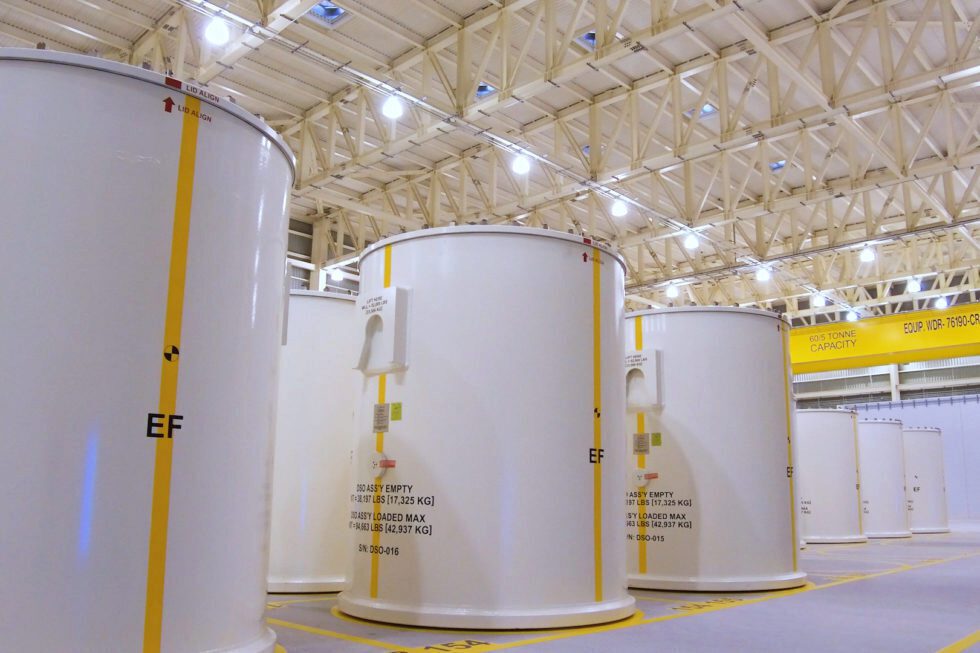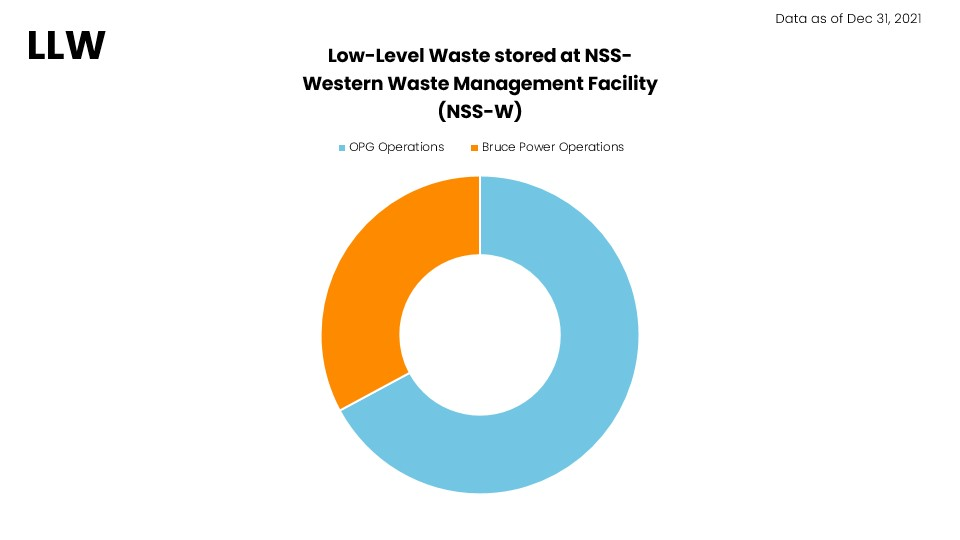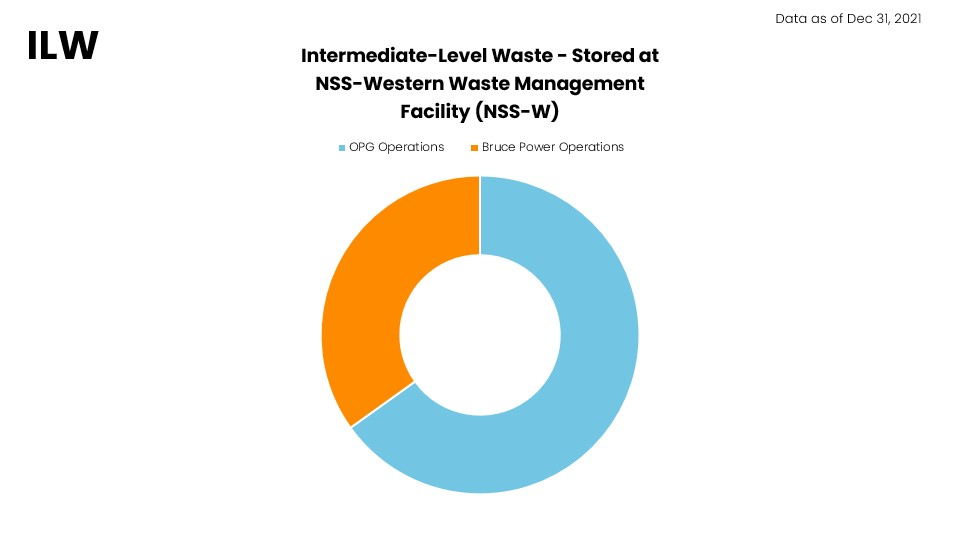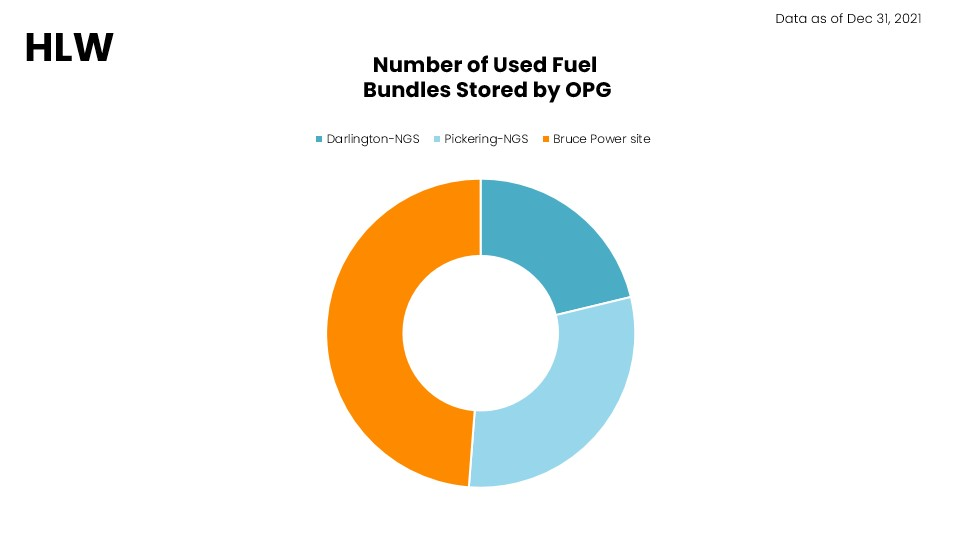We take full responsibility for the entire lifecycle of the waste in our care, and work within regulations set by federal and international regulators. That level of responsibility is unique to the nuclear industry. This commitment is on display in every decision we make, and every solution we find.
Radioactive materials are an assortment of objects produced from the nuclear generating cycle that can either be reused, recycled or volume reduced. Examples of nuclear materials include items brought into OPG reactors such as small tools, gloves and hardhats. These items can be incinerated or decontaminated and reused.
In contrast, waste is any item that cannot be reused, or further volume-reduced, such as the ash that is produced from the incineration process or used-fuel.
In Canada, there are three nuclear waste classifications:
Low-Level: Lightly contaminated materials such as garments or small tools. Through OPG’s innovations in sorting & recycling, volume reduction of low-level material by up to 50% should be achieved over the next 10 years, leaving ash as the remaining waste to be disposed of.
Intermediate-Level: Resins, filters or other items used in the reactors. OPG’s commitment to innovations in volume reduction is unwavering which is why, in collaboration with industry partners, they are continuously working on ways to re-utilize resin within the industry and are working with NWMO to ensure safe, permanent storage of materials that cannot be reused or recycled.
High-Level/Used Fuel: Used nuclear fuel, taken from our reactors, is cooled in large water bays for 10 years before being carefully placed into a dry-storage container for interim storage. Overall volumes of used nuclear fuel are very low. In fact, if all of Canada’s used nuclear fuel was stacked one on top of another, there would only be enough fuel to fill 9 NHL sized hockey rinks from ice surface to the top of the boards. For over 50 years of reliable operations, this volume is small compared to the abundance of clean energy provided to the province.
Waste facts
0
95
of Canada’s nuclear waste overall volume is classified as very-low or low-level
0
50
volume reduction of low-level waste over 10+ years with innovations in sorting/segregating
0
4256
Dry Storage Containers are currently stored in OPG facilities
0
9
NHL sized rinks (surface to top of boards) could store all of Canada's spent fuel
0
75
tonnes is the approximate weight of a fully loaded Dry Storage Container
How waste is managed
Nuclear Sustainability Services (NSS) Facilities
OPG’s nuclear waste and radioactive materials are managed at three NSS sites. The NSS Western Waste Management Facility (NSS-WWMF) in Bruce County receives and manages the low-and intermediate-level materials from the Darlington, Pickering, and Bruce Power nuclear stations. In addition, OPG’s NSS-WWMF provides Bruce Power with nuclear waste management services to support the operations of their facilities in Bruce County. OPG safely and securely accepts and provides interim storage for Bruce Power’s low-level, intermediate-level and used fuel waste.
The low-level and intermediate-level radioactive materials generated are safely transported and stored on an interim basis at the NSS-WWMF. Through research and innovative technologies, OPG is continuing to reduce the waste volumes from our operations to minimize our environmental footprint.

Integrated strategy for radioactive waste
The Nuclear Waste Management Organization (NWMO) has developed a strategy aimed to address gaps in waste disposal planning, from electricity generation to the production of medical isotopes. OPG endorses the NWMO’s strategy and supports the goal of providing long-term solutions for all radioactive waste in Canada.
Licensed, regulated, and safe
Nuclear power production is subject to levels of regulatory oversight that are matched by no other power source.
The Canadian Nuclear Safety Commission (CNSC) regulates all OPG nuclear sites, including the use of nuclear energy and materials to safeguard health and the environment, to ensure safety and security, and to respect Canada’s international commitments on the peaceful use of nuclear energy.
Per the ISRW, the Nuclear Waste Management Organization (NWMO) oversees the planning and implementation for the safe disposal of intermediate-level waste and used-fuel.
And OPG’s Nuclear Sustainability Services (NSS) makes sure OPG’s nuclear waste and radioactive materials are safely managed every step of the way.
Subscribe and stay informed
Sign up to receive the latest news, project updates, and event information from OPG.


